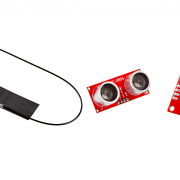High Altitude Balloon Project - Part 2
You've got to watch this video! Part two of the HAB series contains information on the balloon, enclosure, the cut-down system, as well as information about our still and video camera systems.
Welcome to the 2nd episode of 'Find the Balloon'! I'll be your host, and as we've done in the past, we're stealing from David who actually found his balloon.
If you're interested in high altitude balloons at all, you've got to watch this video. The burst happens around 2:45, and then things get really scary.
This week we post the tutorials on Still and Video Cameras and The Balloon, Enclosure, Helium, and Cut-Down that go over all these sub-systems and more. There is a ton of material here. If you haven't been reading up on our high altitude balloon project, you can start from the beginning.







